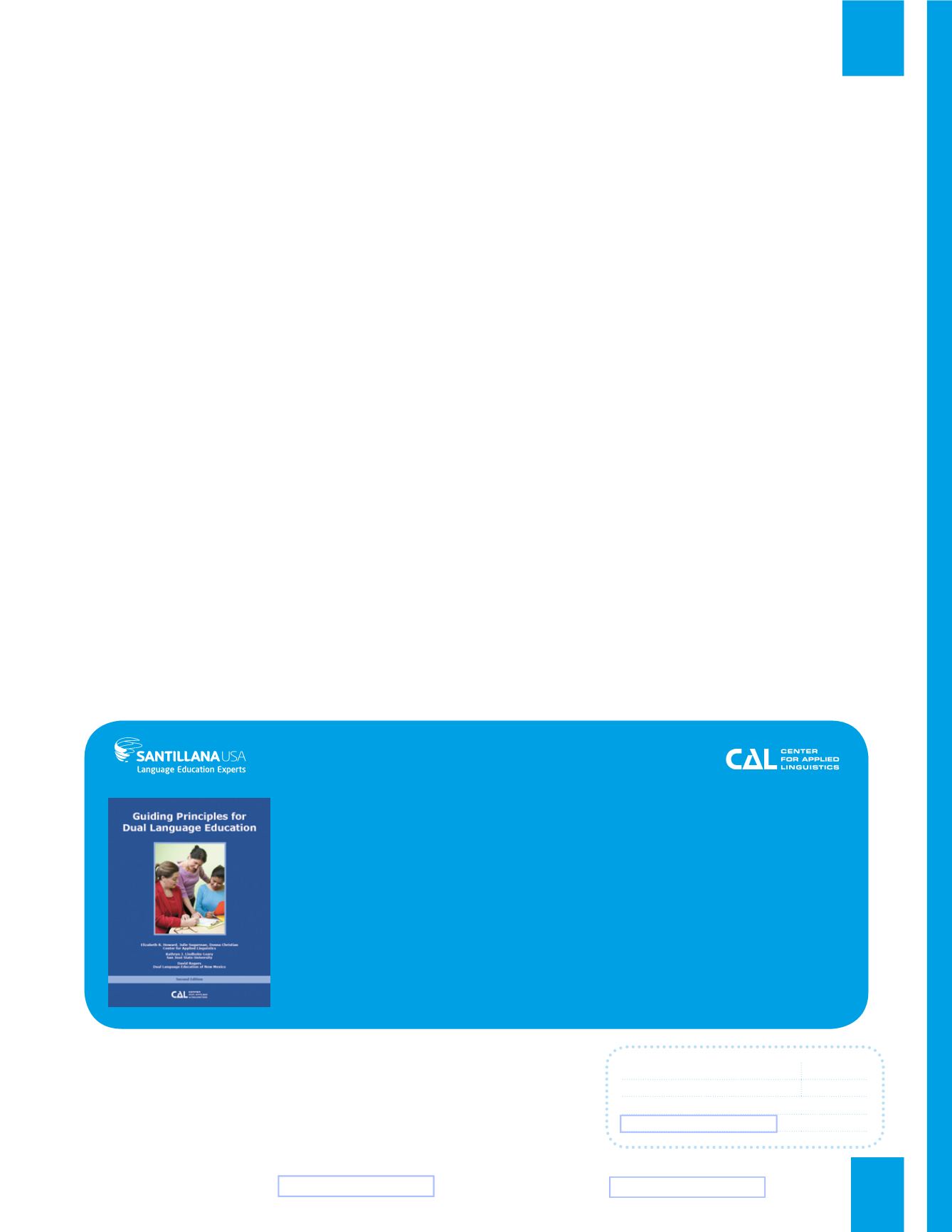

SHOP ONLIN
E www.santillanausa.comI TECHNOLOGY SUPPOR
T help@santillanausa.com157
Professional Development
Comprehensible Input and its Implications to the Bilingual,
ESL, and Spanish Classroom
9781631135941 | Levels K–12
This session focuses on Second Language Acquisition theories
as presented by researchers (Krashen, 1981; Krashen &
Terrell, 1983), including Jim Cummins’s distinction between
two types of language: basic interpersonal communications
skills (BICS) and cognitive academic language proficiency
(CALP). Participants learn how these theories can help develop
effective instructional strategies and assessments that guide
students along a continuum of language development—from
cognitively undemanding, context-embedded curricula to
cognitively demanding, context-reduced curricula (Robson,
1995).
Instructional Learning Strategies for the Bilingual/ESL
Classroom
9781631135958 | Levels K–12
This session explores the meaning of bilingualism and
effective bilingual language program models, including
transitional, dual-language, one-way and two-way bilingual,
among others. Participants examine key factors in the
development of bilingual programs, implementation issues,
materials that most effectively support L1 and L2 oral
language and literacy development, and common transferable
elements of L1 to L2 literacy. Participants learn how to
develop effective instructional units and compare, contrast,
and evaluate examples of curriculum mapping, lesson
designs, and model lessons.
Principles of Interactive Instruction
9781631135965 | Levels K–12
This session explores activity-based teaching and focuses
on how teachers can recognize what each learner brings to
the classroom and the role they play in their own language
acquisition process. Since research on learning and memory
(Sprenger, 1999), on language acquisition and language
learning (Cameron, 2001), and on the functions of the brain
(Genesee, 2000) confirms ELLs are actively constructing
schema (organizational structures of language and content)
and meaning, instruction should motivate students to take
active roles in their own learning. Participants will learn how
communicative teaching and learning focuses on authentic,
comprehensible, and interactive communication through
a variety of channels: teacher/student, student/teacher,
student/student, student/students, etc.
Developing Cross-Cultural Awareness and Multicultural
Understanding
9781631135972 | Levels K–12
This session explores the importance of multiculturalism and
pluralism in the classroom and ways to better understand
and serve different student populations. Participants examine
Banks’s (1997) dimensions of multicultural education and
discuss the importance of cultural differences, strategies
to appropriately respond to these differences, how cultural
differences may impact learning in math, science, and social
studies; and how to apply these principles to their own
instruction.
ESL/ELD, BILINGUAL, AND DUAL-LANGUAGE SESSIONS (CONT’D.)
Maximum of 35 participants
$3,500.00
Each additional participant
$50.00
FOR MORE INFORMATION:
Mlouzao@santillanausa.comDual Language Education Fundamentals Workshop
Featuring the Guiding Principles
for Dual Language Education
978-1-68292-106-7
The one-day workshop, presented by experts from the Center for Applied Linguistics and Santillana
USA, explores the research base and key components of dual-language programming and instruction
through the lens of the widely used Guiding Principles for Dual Language Education. Participants learn
the fundamentals of dual-language education, discover best practices, and identify goals for developing
or enhancing an effective DL program on their campus.
Learn more and register for workshops online at
www.cal.org/cal-susa$500 per person. Early bird and group discounts available.


















